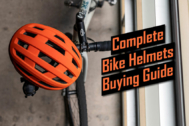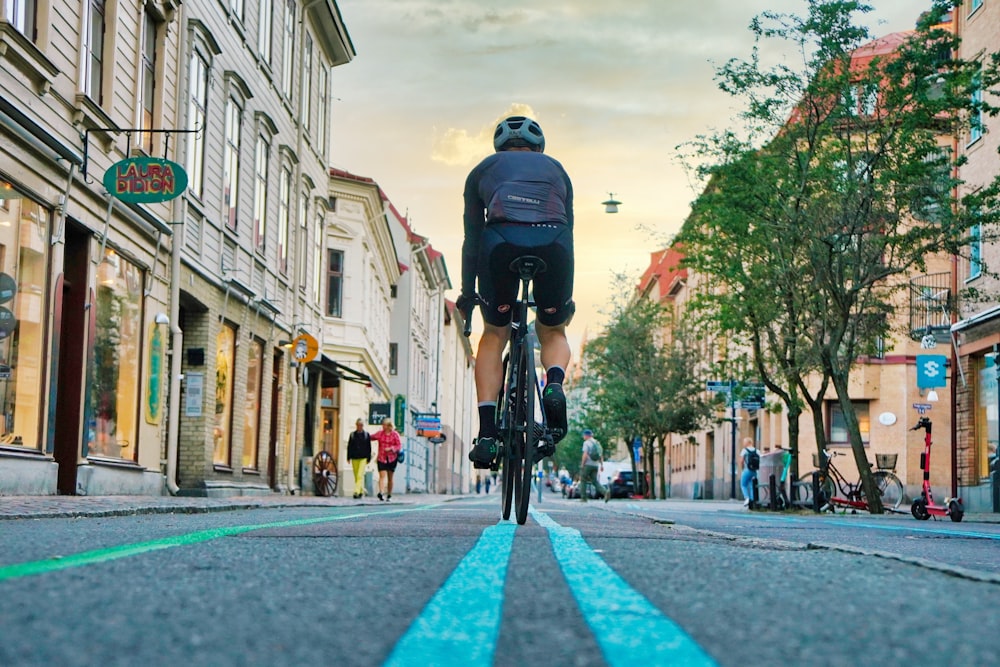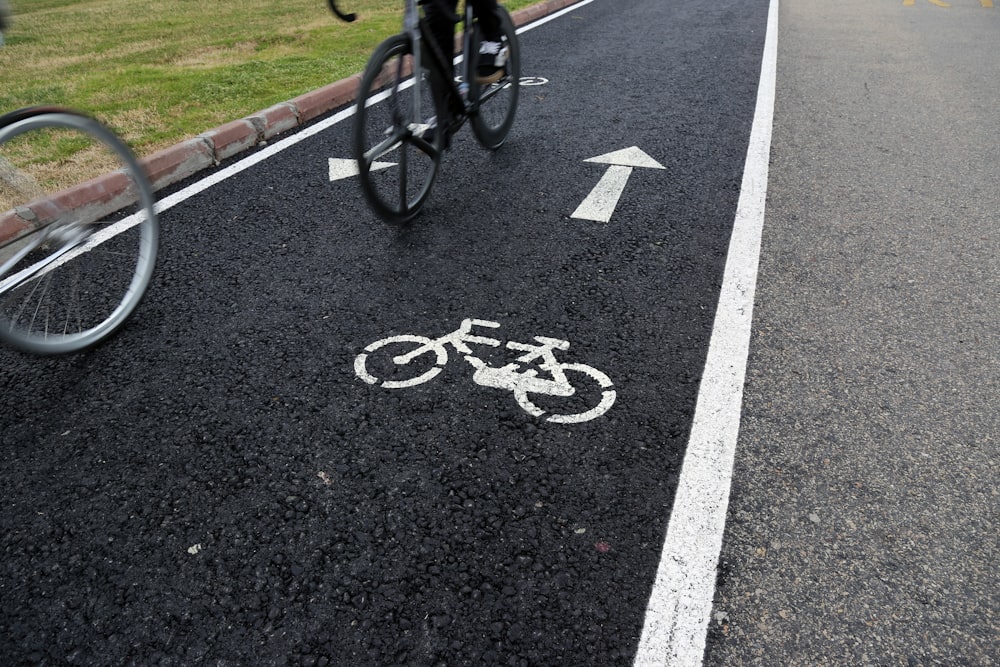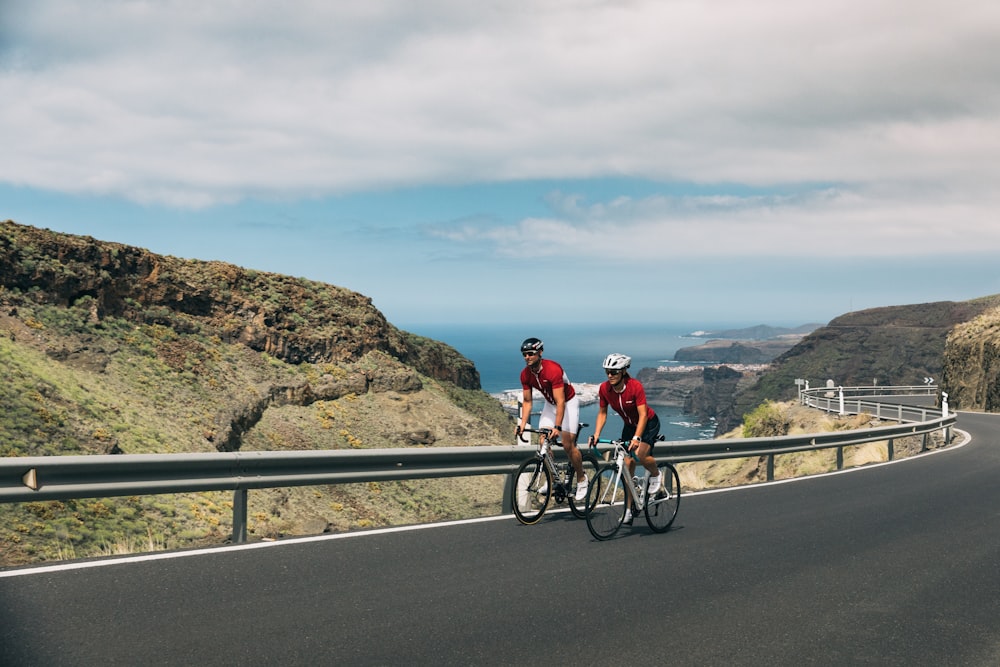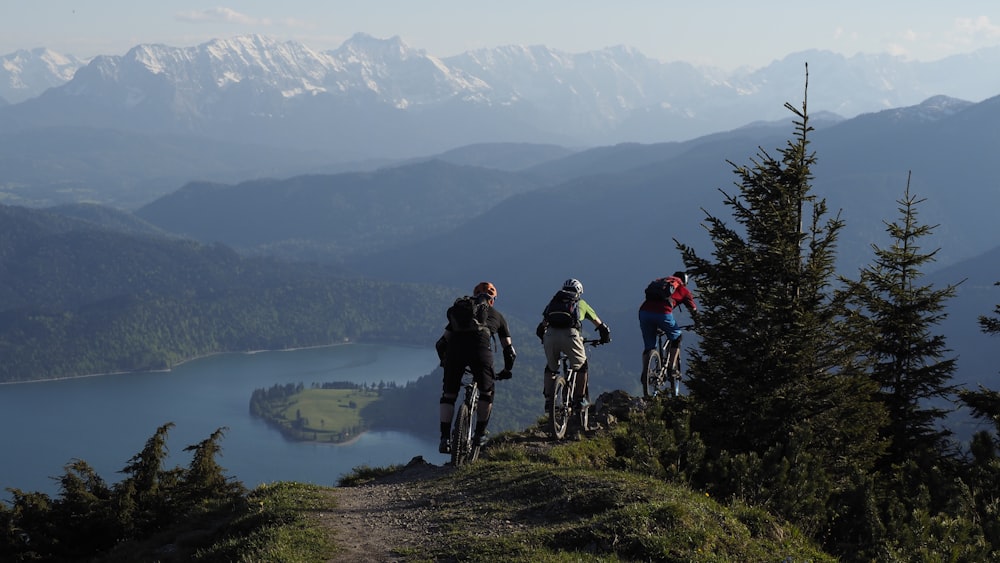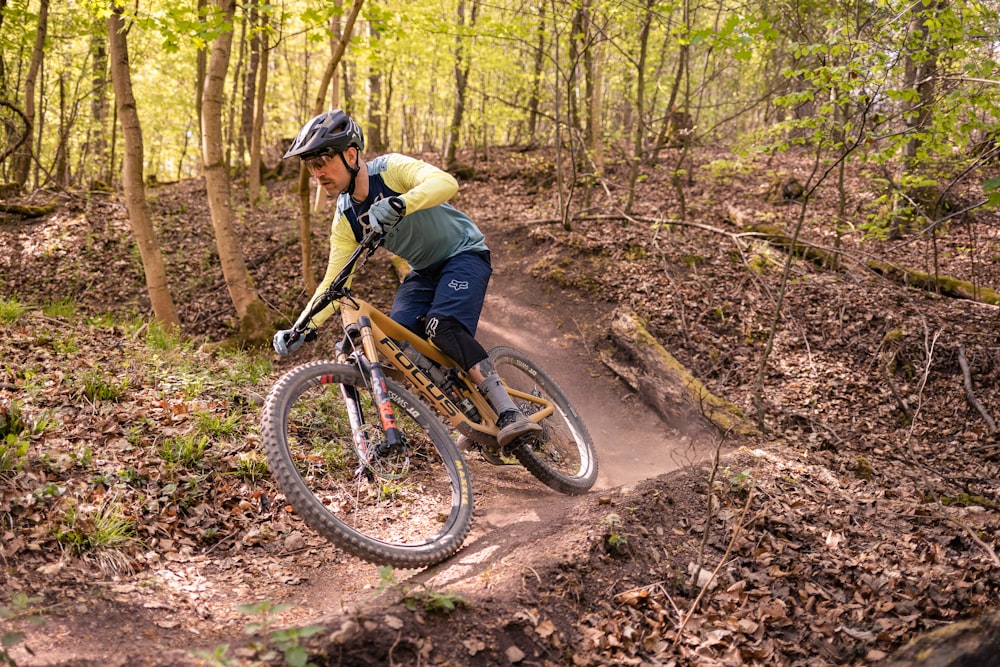Biking Etiquette & Safety Tips – The Written And Unwritten Rules
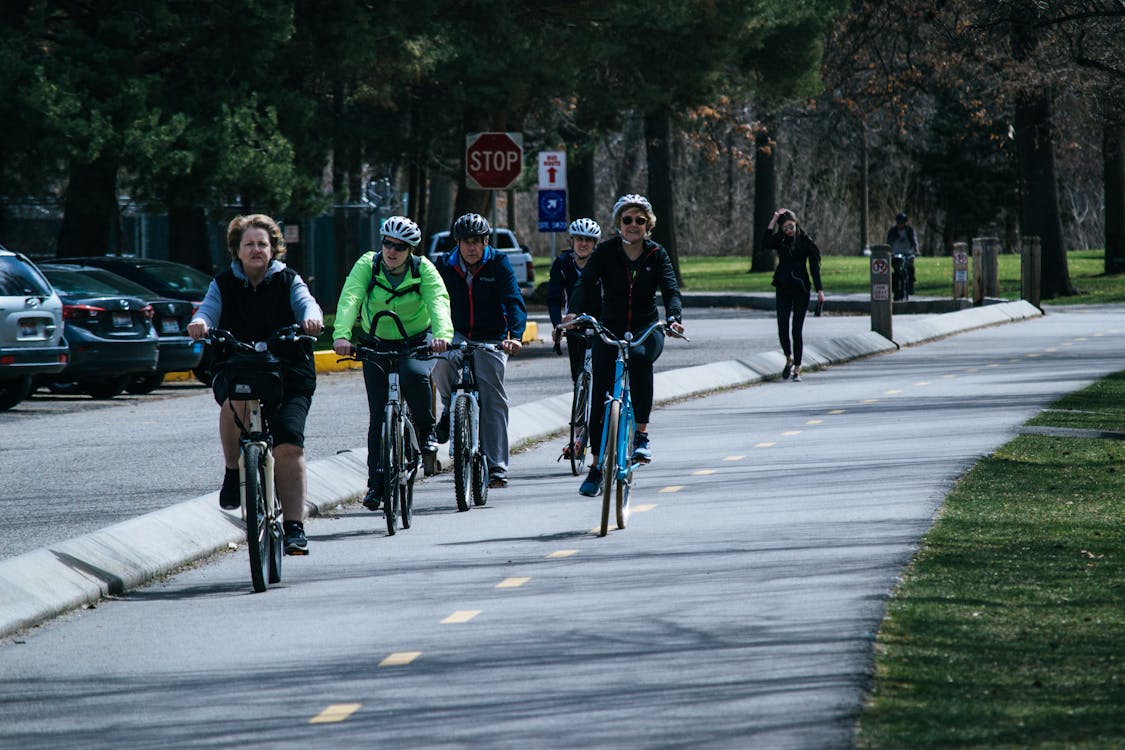
Cycling is a fun and rewarding activity, whether as transport, exercise, or just a means for socializing. To avoid accidents and injuries, it is important to follow good safety practices, adhere to bicycle etiquette, and obey the rules of the road (because once you’re on it, you are traffic too).
In 2018 there were 289,076 preventable, non-fatal bicycle injuries in the United States. Although the cyclist may not have been to blame in many of these incidents, they nevertheless highlight the importance of riding with patience, care, and the use of good judgment while on roads and paths.
Essential Cycling Equipment
Helmet
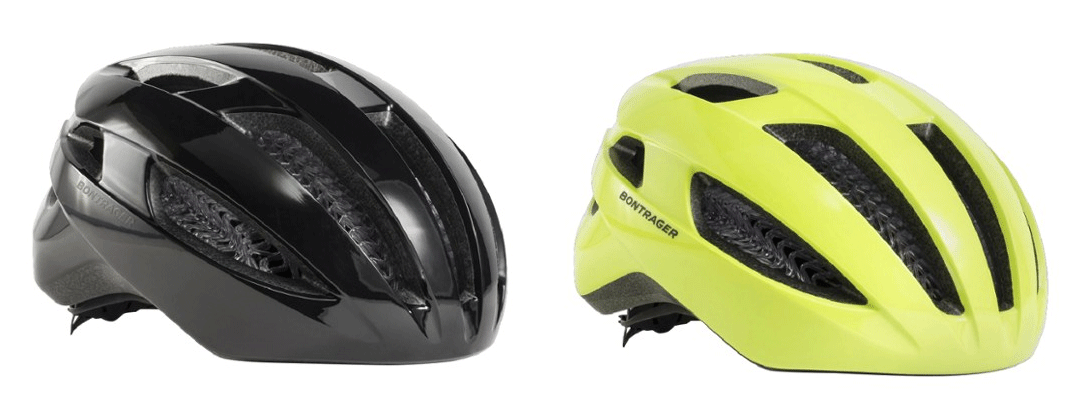
Although it won’t make up for bad habits, a helmet will help limit the damage should an accident occur, making it absolutely essential every time you hop on your bike.
It is estimated that helmets reduce the risk of head injury by 60% and brain injury by 58%, with another study claiming up to 88% reduction. If your helmet has been through an accident, it is important to replace it as the structural integrity may be compromised.
How to Choose the Perfect Bike Helmet for Your Style of Riding
Keep in mind that even the best bike helmets won’t protect your head unless you wear them properly.
Lights (Front & Back) & Reflective Clothing
Using bright bike lights on the front and back of your bike will give other cyclists and drivers the best chance of seeing you, providing them more time to adjust their speed and maneuver safely past. Many bike lights are often not adequately bright enough, so investing in a set that has sufficient lumens and battery life is advisable.
There is no definitive guideline for the number of lumens required, however, 100+ front and 500+ on the back should ensure visibility both day and night.
Reflective or bright-colored clothing is another helpful addition to good lights and gives you the best opportunity to be seen as early as possible.
Brakes
Ensuring your brakes function well will give you the best chance of avoiding or minimizing danger when the situation arises. Rim brake pads are relatively inexpensive and easy to change with the right tools and a little help from Youtube, or your local bike shop (or ‘LBS’ in cyclist lingo). Disk brakes are much more complex, so you’ll likely need to enlist the help of your LBS to ensure they’re road-worthy.
Bike Bells & Horns
For biking on city roads and multi-use paths having a bell or bike horn is very helpful. It is important that pedestrians are aware of an oncoming bike to prevent sudden movements into your path. In areas where pedestrians are not used to biking traffic, a bell can occasionally have the undesired effect where the person stops and turns into your path, however in more cycle-friendly cities, this shouldn’t be an issue.
Extra awareness for pedestrians wearing headphones, especially the noise-canceling kind, is also worth noting, as the efficacy of bells and surrounding noise is reduced.
Bike Riding Do’s and Dont’s
City maps usually highlight the main vehicle-centric roads, where the majority of vehicle traffic is funneled, roads we know well: either by driving them ourselves, with others or by taking public transport.
For cyclists, it is valuable to familiarize yourself with more bike-friendly roads that have slower traffic and/or cycle paths, creating a safer and often faster route (oftentimes no traffic lights). You can do this kind of reconnaissance the old-fashioned way, or use one of the many bike route apps available (such as Bikemap or Google Maps bike route feature) to see low traffic/bike-friendly routes.
Planning your route in advance, and avoiding rush-hour traffic times (if possible) makes for a much safer and enjoyable journey.
Ride Defensively
Riding on two wheels means you are without a protective metal shell and therefore vulnerable on the road amongst vehicles. Although we may not like it, cyclists need to behave defensively when sharing the road, as we will almost always come off second best in a road accident. Here are a few ideas to consider.
Don’t be too trusting
It is important to expect the unexpected when cycling. Drivers often make a mess of signaling, either signaling mistakenly, the wrong direction, too late, or not at all. This inconsistency means we should always be aware that the apparent intentions of the vehicle in front of us may not be as they seem.
You should also assume that you can’t be seen at all times. Blindspots, lack of attention, distractions, and plain old bad driving, meaning you can easily be missed.
A common example: while riding close to a vehicle on the inside, approaching a turn, the vehicle signals late, brakes quickly, and turns into the corner; cutting you off and potentially sending you on a short flight. Distrustingly anticipating the intentions of other road users will help you avoid such situations.
Another tactic to gauge when a vehicle is about to turn is to watch the movement of the front wheels, which gives a much more definitive indication than driver signaling.
Be Predictable
Speaking of trustworthiness, always be predictable and consistent (trustworthy) on the road. When you are predictable by letting others know your intentions in advance, you give other road users the best chance to maneuver safely around you. To be predictable you must:
- Avoid sudden movements or speed changes
- Know the rules of the road for cars and cyclists so you can behave appropriately in a given situation
- Learn how to give the correct bike hand signals (it should be noted that there are some variances in the rules from state to state and in other countries)
- Be aware of your environment before a signal and turn, be able to perform a ‘shoulder check’ without drifting from your line
- Always overtake, do not undertake. The undertaking is dangerous and unexpected by many drivers. It also positions you on the inside of a vehicles’ turning path
Be Aware
Always keep your focus on the road and the surrounding environment while cycling, especially in areas of high activity or traffic. Avoid listening to music, chatting with other riders, or letting your attention slip while riding in these environments and you will have the best chance to anticipate danger. In the city, you must constantly scan your environment for pedestrians who may suddenly step into your path, for parked cars with passengers about to exit the vehicle, or for other sudden changes ahead of you.
Know When To Take the Road
Many cyclists naturally hug the side of the road, thinking it is the safest place to be. This is not always the case, and sometimes, to be defensive yet assertive, we must take the center of the road. This action:
- Helps vehicles, who may be about to turn into your path, to see you
- Tells cars to wait until there is a safe time to pass
- Asserts your position if you feel unsafe
Other situations when this is appropriate are: if the road quality is very poor at the side, if there are many parked cars along the road (to avoid being ‘doored’ by a parked car), or if you are cycling at the same speed as the surrounding traffic.
Use Eye Contact
Making eye contact with a driver you are approaching is the perfect way to ensure they know where you are, and paired with good signaling, allows you to be sure your next move is understood. This is especially relevant when arriving at intersections or entering roundabouts. If a person makes eye contact or looks directly at you it is likely that they see you, but not guaranteed. If they don’t look at you at all, assume they haven’t seen you, and move forward cautiously. This trick of looking for the driver while cycling also allows you to see if the individual is distracted (not looking at the road) by a phone or other passengers, for example. If you notice a driver not paying attention to the road, be extremely cautious: distracted drivers may drift over lanes or move into your path unexpectedly.
Multi-use Paths
Multi-use paths are perfect for a casual, leisurely ride, or to avoid automobile traffic while commuting. However, they are not well suited to other purposes like cycling at speed or large group cycling.
Different paths have different hierarchies of traffic, but when sharing with walkers, families with kids, joggers, skateboarders, etc. ride at a safe speed that allows ample stopping time. Be courteous and respectful toward other users, using your bell if you have one. If not, a simple call of “On your left!” will suffice before you overtake. If you have spread into the opposite direction’s lane, give yourself enough time to move back into your own lane safely when there are oncoming users.
Take It Easy
The tendency for both cyclists and drivers to ride or drive too quickly is ubiquitous worldwide. The single second saved by running a red light or weaving dangerously through tight spaces is completely inconsequential when you consider the negative consequences of causing or being involved in a crash. It is always wise to relax, ride at a safe pace, and be patient with others while cycling, the cost of doing otherwise is too great. Of course there are situations where speed is fine, say while training on the appropriate roads, but this is the exception and not the rule.
Road rage is an especially silly and reckless thing to engage in while cycling. The vulnerability we mentioned earlier always leaves the cyclist at a disadvantage, so avoiding confrontation by letting it slide will help avoid any unsavory escalations in these situations. If a driver is legitimately driving dangerously, take down their plate number and report them.
Riding Two Abreast
This is a controversial topic among cyclists and drivers. The law roughly states that it is legal to ride two abreast, so long as the normal and reasonable flow of traffic is not impeded. “Impeded” is defined as there being a multiple car line waiting to pass. Cyclists must also ride within 1 lane on a laned roadway. For specific road laws in your state or county, check the relevant websites to be sure.
If there is a passing lane with ample space for vehicles to pass (minimum of 3 feet), cyclists are permitted to continue riding two abreast. Changing to single-file riding is good practice in busy areas where appropriate, however, cycling two abreast is a key safety technique.
There are a few main reasons for this. Firstly, the longer the line, the more distance the overtaking vehicle must cover in order to perform the maneuver safely (greater than the width of an extra cyclist).
Secondly, it signals to the drivers behind that there is not enough room/time to pass safely due to the road or traffic ahead, and lastly, it increases visibility to other traffic, following the old adage “there is safety in numbers”.
Group Cycling Etiquette / Road Cycling Etiquette
Cycling recreationally with family, friends, or a local club is an excellent way to socialize while getting the mental and physical health benefits of the activity. All of the above bike safety and etiquette guidelines should be practiced, along with these other specific group ride behaviors (though this list is not exhaustive):
- It is vital to get comfortable riding side to side with another bicycle, as in groups you will generally ride with a foot or less between your elbows
- Be extremely predictable, as the reaction time for those behind you will be very short if they are drafting
- Learn to ride in a consistent line, and don’t overreact to changes in the road as exaggerated movements can lead to a crash
- Learn whatever they hand signals the particular group uses, so you can indicate turns or road hazards ahead, such as potholes or parked cars
- Lastly, if you do join a club, make sure you know the fitness level of the group so that you don’t get left behind
Mountain Biking Etiquette: 11 Unspoken Trail Riding Rules

Trail riding has gained popularity over the past few years and is enjoyed by beginner and professional mountain bikers alike.
But, because of all the extra bikers, people, cars, and animals on the path, it’s prudent to have some courtesy and etiquette out there—it costs nothing but makes the biking world better!
Following MTB etiquette can improve the experience for all using the trails—from a simple ‘hi’ to giving a helping hand, all this adds up to being a better person.
When in doubt, speak to a fellow biker to get a thorough understanding of how things work on the trail and what mountain biking etiquette they follow.
Below are 11 unwritten rules of mountain biking that are followed by trail riders to make it a safer and more fun sport for everyone.
1. Greet a passer-by
Don’t be shy and make sure to greet fellow bikers. A little courtesy goes a long way—who knows where a small ‘hello’ could go? Many trail riders have made some amazing friends along the path and end up having intense trail-grinding sessions together.
It’s a good practice to apologize and thank other cyclists when necessary, even if they aren’t bothered with returning the gesture. A simple nod or wave is also a perfect form of greeting and acknowledging someone on the tracks—this is appropriate MTB trail etiquette.
In addition to that, make sure to also use bike hand signals when appropriate to signal to other riders that you’re turning, stopping, or slowing down.
2. Stay on the trail
One wouldn’t drive off the road in an urban setting, so why do it on the trails?
Riders are often seen pulling shortcuts and going off the path, ruining the surrounding nature. There’s a reason the trail is the way it is and other bikers with good mountain bike trail etiquette follow it.
While some tracks are man-made and easier to fix, many are formed naturally. The plants, trees, and grass have grown in a way that nature lovers appreciate and by taking shortcuts off the track, you risk ruining it.
3. Leave the trail cleaner than it was
One wouldn’t leave trash lying around their house, so why dump it on the trails? It’s a very shameful habit, but some cyclists empty all their wrappers, bottles, and other waste as they ride along. This pollutes not only the environment but also makes the path less appealing.
The best way to go about this is to keep the junk and dispose of it in a bin or take it home. An excellent practice to adopt is if something doesn’t belong there, get rid of it. If other riders have been ill-mannered, do a good deed and pick up after them.
4. Sharing is caring
Stopping and checking up on a mountain biker that has trouble along the trail is good mountain biking etiquette and one of the unspoken mountain bike rules.
Sometimes all they might require is some encouragement to get up a treacherous hill. If they have a puncture or call for other mechanical support, assisting them with a spare won’t break the bank, but it gives bonus cyclist points.
Leaving home with an extra bottle of water or snack can come in handy, but it could also help a fellow rider that needs it more. Random acts of kindness go a long way in life and make the riding community better and more connected.
5. Let it dry
Many mountain bikers enjoy cycling through muddy trails and water puddles after a heavy downpour of rain. As much as this is fun, it ruins the path and creates ruts that remain etched into it. This makes it uneven, and it becomes a danger to riders as they can easily lose their balance if the wheels get stuck.
A good way to go about this is to let the path dry and revisit it once it dries up. By doing so, the track is retained and cyclists may enjoy it for more seasons to come. Some bikers could have been using the tracks longer than others so, out of respect, it’s a good mountain bike etiquette to follow.
6. Go prepared
No one likes unprepared riders that keep stopping and whose bicycle keeps breaking down, especially when riding in a group. Before taking the mountain bike on a trail, make sure it’s well-serviced and all the parts work as they’re supposed to—lubricate your mountain bike and tighten the screws and nuts.
Basic Bike Maintenance for Beginner Cyclists: A Complete Guide to Keep Your Bike Running Smoothly
It’s good mountain biking etiquette to be prepared for certain scenarios that could occur, such as punctures and broken components, especially on longer rides. If the path is far away, it’s best to have camping gear and food on board in the event of an emergency, if help isn’t nearby.
7. Stay out of the way
One of the mountain biking rules that should be followed is to go easy on shared trails, specifically on busier days.
Nobody likes a show-off, so it’s good MTB etiquette to slow down near other riders rather than flying past them at high speed. This leaves a trail of dust which will annoy them and doesn’t make you look cool.
The best approach to overtaking is by reducing speed close to cyclists and carefully passing them while remembering to say thanks. The same thing applies to riders who are slower—unless it’s a race, let those that are quicker pass and then speed up.
There may not be a written mountain bike path protocol for the right of way and riders usually follow the highway code. However, being the more courteous rider is standard practice.
8. Wilderness
Almost every mountain biker has a goal of riding in the wilderness alongside wildlife and nature, but remember—this is their natural habitat and there are specific mountain biking rules that apply in such a scenario. If you’re afraid, it’s good to be prepared with special noise devices or sprays that come in handy in the event of an attack.
Try not to scare or intimidate animals though, as some may end up defending themselves, which is both dangerous for you and morally wrong. It’s very rare to hear of an animal coming into a neighborhood and terrorizing residents, so why do it to them?
9. Avoid certain roads
While riding, you may come across various roads and trails that look fun and could be a shorter course according to the map. As much as it can save time or be an easier path, it’s best to know whether the land is private or public. In the past, rowdy landowners have shot at trespassers, especially when found on grounds with prior warnings that weren’t followed.
Always get permission from the owner to cycle on their property—it’s good MTB trail etiquette to do so because not practicing this may spoil routes for future cyclists. If unsure, stick to the planned route, stay clear of unknown paths, and pay strict attention to road signs.
10. Follow the law
Good mountain bike etiquette dictates that riders should adhere to rules at all times, whether on or off-road. Almost every town and country has regulations that apply to all cyclists—even on MTB trails—with some giving out heavy fines and penalties for those that don’t obey them.
Always stick to speed and safety guidelines as this affects all the bikers and any other onlookers and property.
On paths that are shared by bikes, horses, and joggers, one wrong move can cause serious harm and damage. Authorities conduct extensive research and recommendations before creating laws, so it’s best to observe them.
11. Keep the volume down
No one likes a loudmouth or someone that rides along listening to music at uncomfortable levels. Whether riding solo or in a group, it’s good to respect the surroundings and keep conversations and music low. Use earphones to listen to songs, especially if they are of an adult nature—there could be children present.
For many people, mountain biking is an escape from the busy and noisy city life and a way to enjoy nature while pushing their bodies to new limits. Most mountain bikers like to enjoy themselves with full focus and concentration, which is why it’s inappropriate (and often illegal) to play loud music in public parks and nature areas.
To Conclude
Remember, cycling for recreation or commuting is not a race, and your safety and the safety of those around you is always the priority. If you are a nervous rider, practice your technique during periods of low traffic and you should eventually build up the confidence to cycle safely and enjoyably anywhere you go.
Cycling is a fun and rewarding activity, and if you follow good safety protocol and etiquette, you will give yourself the best chance of avoiding an incident.

